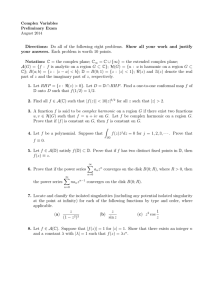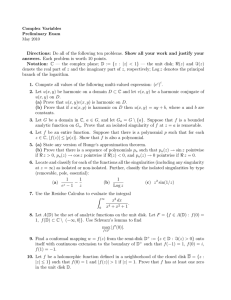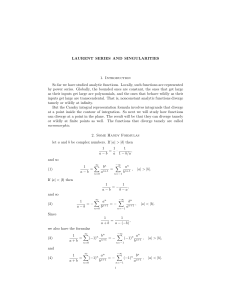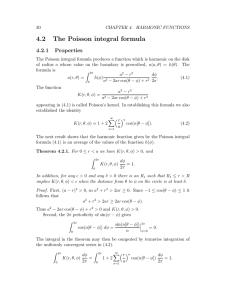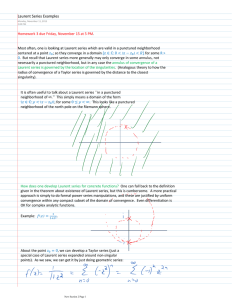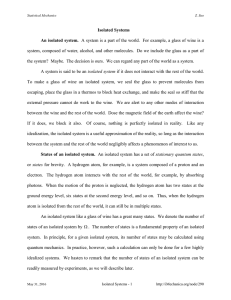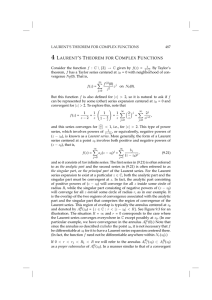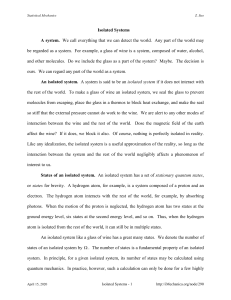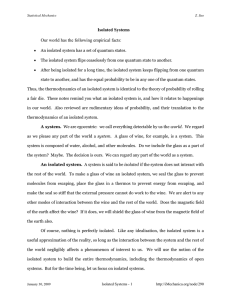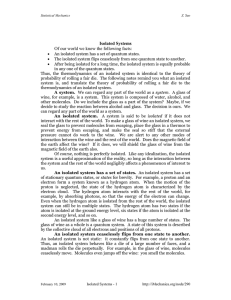Math 419 Final Exam, Fall 2009
advertisement
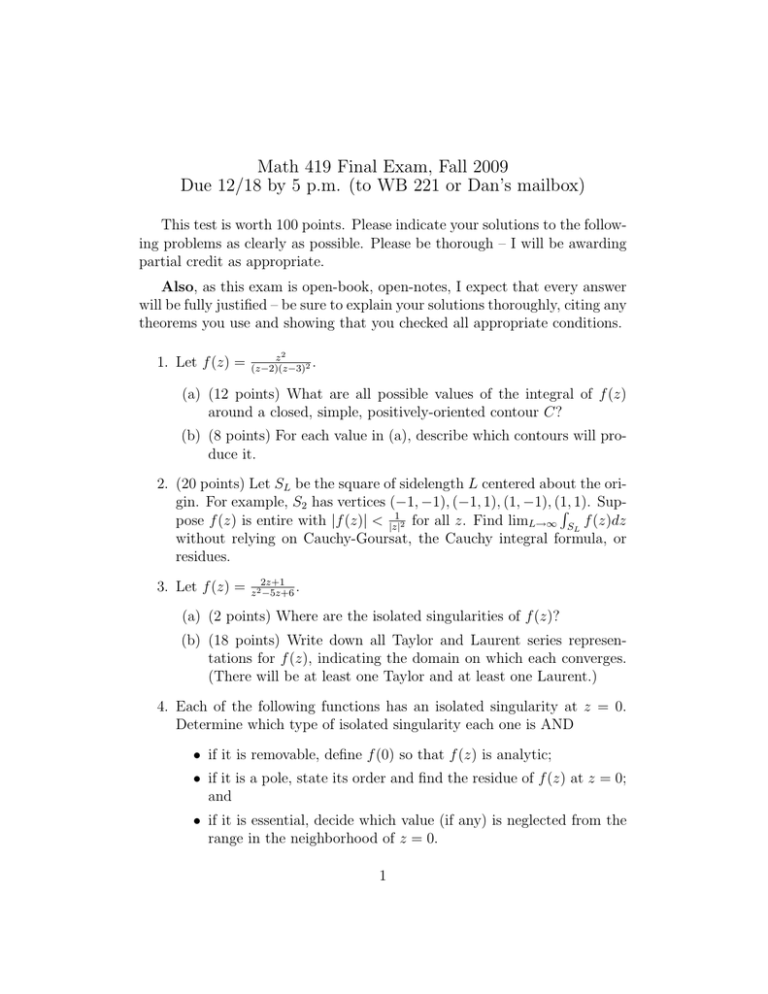
Math 419 Final Exam, Fall 2009 Due 12/18 by 5 p.m. (to WB 221 or Dan’s mailbox) This test is worth 100 points. Please indicate your solutions to the following problems as clearly as possible. Please be thorough – I will be awarding partial credit as appropriate. Also, as this exam is open-book, open-notes, I expect that every answer will be fully justified – be sure to explain your solutions thoroughly, citing any theorems you use and showing that you checked all appropriate conditions. 1. Let f (z) = z2 . (z−2)(z−3)2 (a) (12 points) What are all possible values of the integral of f (z) around a closed, simple, positively-oriented contour C? (b) (8 points) For each value in (a), describe which contours will produce it. 2. (20 points) Let SL be the square of sidelength L centered about the origin. For example, S2 has vertices (−1, −1), (−1, 1), (1, −1), (1, R 1). Suppose f (z) is entire with |f (z)| < |z|12 for all z. Find limL→∞ SL f (z)dz without relying on Cauchy-Goursat, the Cauchy integral formula, or residues. 3. Let f (z) = 2z+1 . z 2 −5z+6 (a) (2 points) Where are the isolated singularities of f (z)? (b) (18 points) Write down all Taylor and Laurent series representations for f (z), indicating the domain on which each converges. (There will be at least one Taylor and at least one Laurent.) 4. Each of the following functions has an isolated singularity at z = 0. Determine which type of isolated singularity each one is AND • if it is removable, define f (0) so that f (z) is analytic; • if it is a pole, state its order and find the residue of f (z) at z = 0; and • if it is essential, decide which value (if any) is neglected from the range in the neighborhood of z = 0. 1 (a) (5 points) (b) (5 points) cos(z) z cos(z)−1 z 1 (c) (5 points) e z − 5 (d) (5 points) z 2 +1 z(z−1) 5. Suppose u(x, y) is harmonic with harmonic conjugate v(x, y) throughout the real plane. Also suppose that u(x, y) ≤ v(x, y) ≤ 4 throughout the real plane. (a) (12 points) Prove that u(x, y) is constant. (b) (8 points) Notice that u+iv reaches its maximum within any given domain. Why does this not contradict the maximum modulus principle? 2
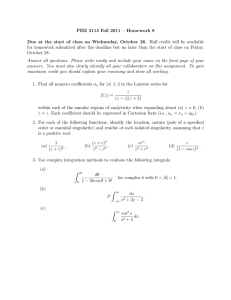
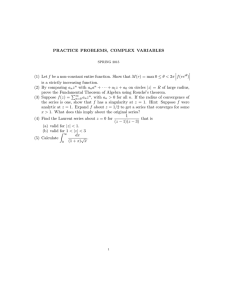
![Mathematics 414 2003–04 Exercises 4 [Due Monday February 2nd, 2004.]](http://s2.studylib.net/store/data/010415765_1-b159664fbd982cf95e1ae146093d034c-300x300.png)
